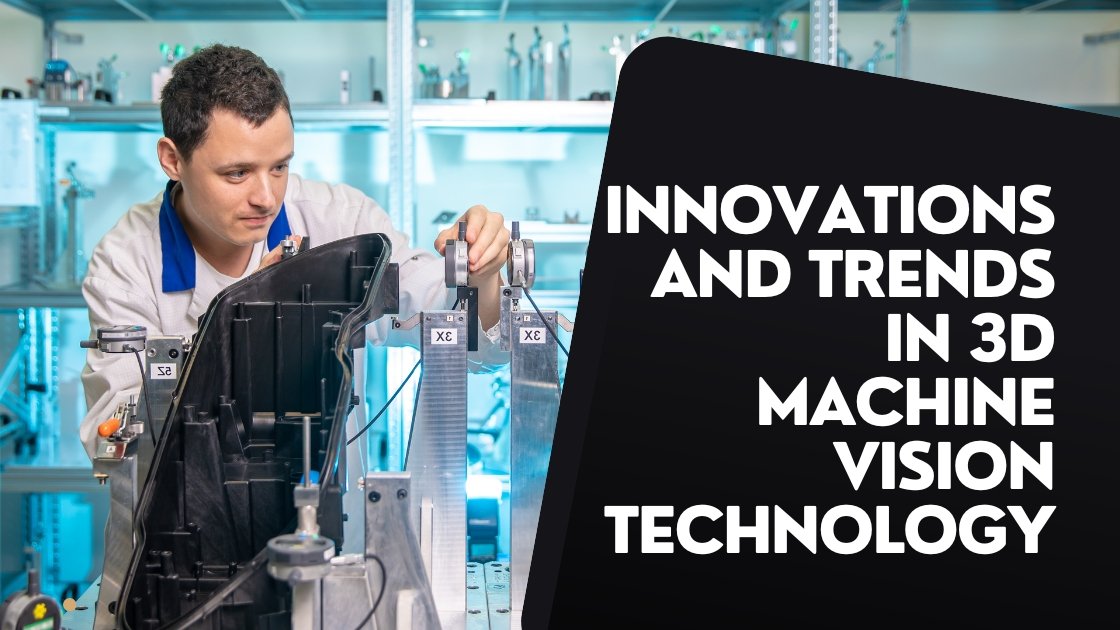3D machine vision technology has rapidly evolved, revolutionizing industries with its ability to capture and interpret three-dimensional images. From improving manufacturing processes to advancing medical diagnostics, the innovations in 3D machine vision are driving efficiency and precision across various sectors. This article explores the latest advancements and trends that are shaping the future of 3D machine vision technology.
Advancements in Hardware
Sensors and Cameras
In recent years, there have been significant advancements in sensor technology, enabling 3D machine vision systems to capture more detailed and accurate images. High-resolution cameras, such as those using Time-of-Flight (ToF) or stereo vision techniques, provide enhanced depth perception and spatial awareness. These cameras are crucial for applications requiring precise measurements and object recognition in industrial automation and robotics.
Lighting Systems
Proper illumination is essential for effective 3D imaging. LED lighting systems have become increasingly integrated into 3D machine vision setups due to their flexibility, energy efficiency, and ability to produce consistent lighting conditions. Innovations in lighting technology ensure optimal visibility and contrast, improving the accuracy of measurements and image analysis in various environments.
Software Developments
Machine Learning and AI
The integration of artificial intelligence and machine learning algorithms has revolutionized 3D machine vision capabilities. AI-powered systems can now learn from vast amounts of data, improving the accuracy of object recognition, defect detection, and quality control processes. These advancements enable real-time decision-making and adaptive learning, making 3D machine vision systems more versatile and efficient in dynamic environments.
Real-Time Processing
Real-time processing capabilities are critical for applications requiring immediate feedback and response. Advanced software algorithms and processing units enable faster data analysis and interpretation, facilitating rapid decision-making in industrial automation, logistics, and autonomous systems. Technologies such as edge computing further enhance the speed and efficiency of 3D vision systems by processing data closer to the source.
Applications Across Industries
Automotive Sector
In the automotive industry, 3D machine vision plays a crucial role in autonomous driving technologies, enabling vehicles to perceive their surroundings accurately and react in real time to potential hazards. Additionally, 3D vision systems are used for quality inspection in manufacturing processes, ensuring high standards in vehicle components and assemblies.
Manufacturing
Manufacturing processes benefit from 3D machine vision technology by enhancing product quality and production efficiency. Automated systems equipped with 3D vision can perform intricate inspections, detect defects, and optimize assembly processes. These systems reduce errors and waste while improving throughput and operational consistency.
Healthcare
In healthcare, 3D machine vision is transforming medical imaging and diagnostics. From CT scans to robotic surgeries, 3D vision systems provide detailed anatomical insights and assist surgeons in performing precise procedures with improved patient outcomes. The technology is also used in prosthetics and orthotics manufacturing, customizing devices based on accurate 3D scans.
Others
Beyond automotive and healthcare, 3D machine vision finds applications in robotics for navigation and object manipulation, agriculture for crop monitoring and harvesting automation, and logistics for inventory management and package sorting. These diverse applications highlight the versatility and growing adoption of 3D vision technology across various industries.
Market Trends and Future Outlook
The global market for 3D machine vision technology is expanding rapidly, driven by advancements in hardware capabilities, software sophistication, and increasing demand for automation. North America, Europe, and Asia-Pacific are leading regions in terms of adoption and technological innovation. Future trends include the integration of 3D vision with Internet of Things (IoT) devices and continued improvements in AI-driven analytics and processing speeds.
Conclusion
In conclusion, the innovations and trends in 3D machine vision technology are poised to redefine industrial processes and enhance capabilities across diverse sectors. As businesses and industries embrace these advancements, the demand for robust and scalable 3D vision solutions continues to grow. For detailed market analysis and insights, consult a Market Research Company in the USA. This sector is not only transforming how we perceive and interact with technology but also paving the way for more efficient and intelligent automation solutions worldwide.



